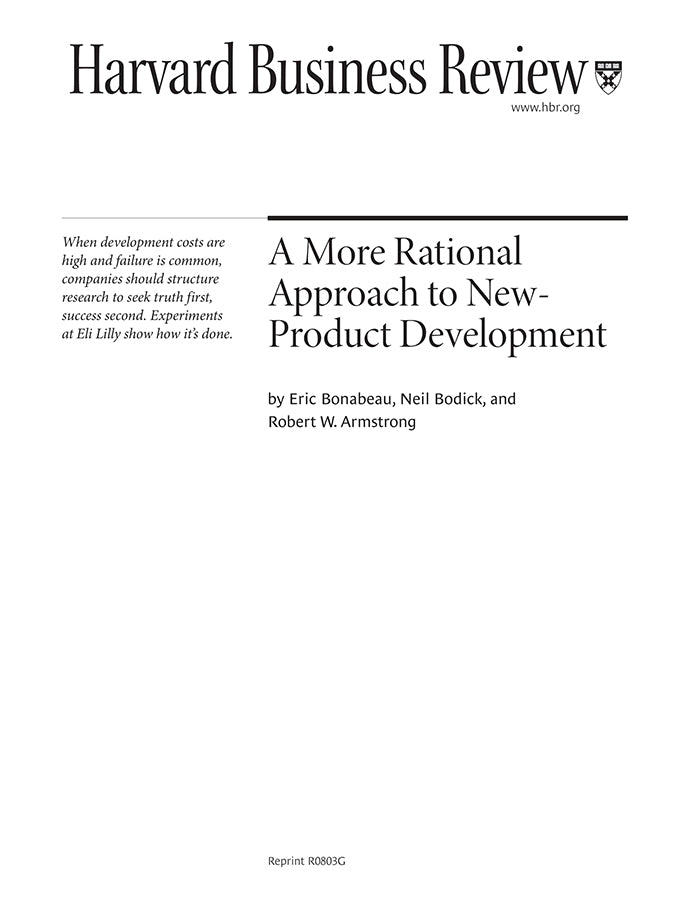A More Rational Approach to New-Product Development
受取状況を読み込めませんでした
Companies often treat new-product development as a monolithic process, but it can be more rationally divided into two parts: an early stage that focuses on evaluating prospects and eliminating bad bets, and a late stage that maximizes the remaining candidates' market potential. Recognizing the value of this approach, Eli Lilly designed and piloted Chorus, an autonomous unit dedicated solely to the early stage. This article demonstrates how segmenting development in this way can speed it up and make it more cost-effective. Two classes of decision-making errors can impede NPD, the authors say. First, managers often ignore evidence challenging their assumptions that projects will succeed. As a result, many projects go forward despite multiple red flags; some even reach the market, only to fail dramatically after their introduction. Second, companies sometimes terminate projects prematurely because people fail to conduct the right experiments to reveal products' potential. Most companies promote both kinds of errors by focusing disproportionately on late-stage development; they lack the early, truth-seeking functions that would head such errors off. In segmented NPD, however, the early-stage organization maintains loyalty to the experiment rather than the product, whereas the late-stage organization pursues commercial success. Chorus has significantly improved NPD efficiency and productivity at Lilly. Although the unit absorbs just one-tenth of Lilly's investment in early-stage development, it delivers a substantially greater fraction of the molecules slated for late Phase II trials--at almost twice the speed and less than a third of the cost of the standard process, sometimes shaving as much as two years off the usual development time.
【書誌情報】
ページ数:12ページ
サイズ:A4
商品番号:HBSP-R0803G
発行日:2008/3/1
登録日:2012/3/28


